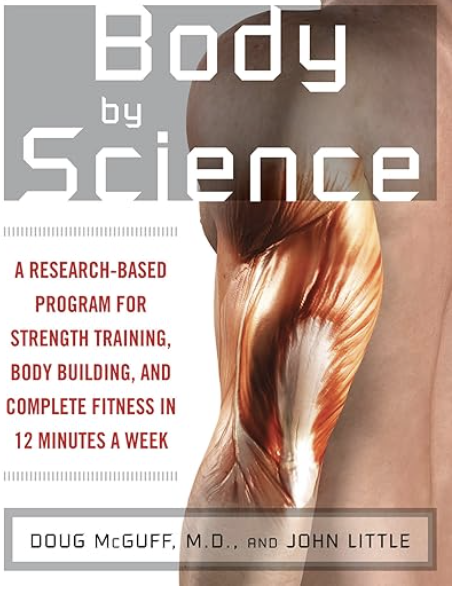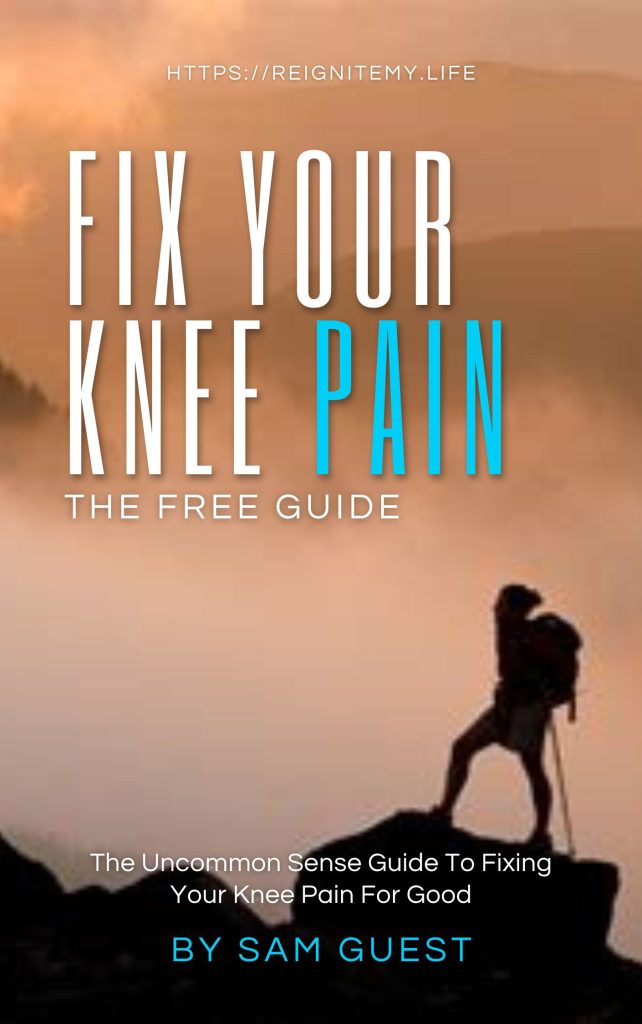Have you ever wondered if it’s possible to achieve peak fitness in less time? “Body by Science” by Doug McGuff M.D. and John Little could be the answer you’re looking for. Tailored for those who are pressed for time yet committed to fitness, it challenges conventional workout norms and presents a scientifically backed, efficient approach to strength training and overall wellness.
The Core Philosophy: The “Big Five” Workout
At the heart of “Body by Science” lies the “Big Five” workout regimen, a novel approach that synergises compound exercises with the principle of time under tension.
Scientific Foundations: Efficiency and Effectiveness
The book’s foundation in scientific evidence is compelling. It starts by asking the question could short, intense, strength based workouts be more beneficial than spending lifting weights hours at the gym?
Studies paralleling High-Intensity Interval Training (HIIT), which shares core principles with the “Big Five,” have shown remarkable improvements in metabolic health and exercise capacity in various populations. This is particularly relevant for busy professionals seeking impactful, time-efficient workouts. The book then takes these discoveries and shows how they can be applied to strength training for similar results.
The “Big Five” Workout
Compound Exercises for Comprehensive Engagement
- The “Big Five” workout consists of compound exercises, involving multiple muscle groups and joint actions. This includes the leg press, pulldown, chest press, overhead press, and seated row.
- These exercises are not only effective but also simple to perform, ensuring that even those new to strength training can execute them properly.
Time Under Tension and Muscle Involvement
- A key concept in the “Big Five” is the focus on time under tension. This approach maximises muscle fibre recruitment, especially important for stimulating growth and strength in fast-twitch muscle fibres. What this means in practice is that you perform a low number of reps very slowly, until total muscle failure, all within a working window of about 2 minutes. It’s brutal!
- Each exercise in the “Big Five” is designed to work the muscles in a thorough and balanced manner, ensuring that all fibre types are engaged and fatigued.

Example Exercises:
Overhead Press: Technique and Muscular Recruitment
- The overhead press, part of the “Big Five,” involves significant triceps, deltoid, and pectoralis muscle engagement. The exercise is designed to recruit these muscles in a systematic manner, ensuring an effective workout without risking shoulder impingement, which can be common with poorly executed overhead movements.
Leg Press: Targeting the Lower Body
- The leg press, another crucial component of the “Big Five,” targets almost every muscle in the lower body, including the hips, buttocks, hamstrings, quadriceps, and even the calf muscles. This exercise ensures a comprehensive lower body workout, essential for overall strength and functional fitness.
Efficiency and Safety
- The “Big Five” workout is not just about what exercises are performed, but also how they are executed. The focus on controlled movements, proper form, and full muscle engagement ensures safety and effectiveness.
- For busy professionals, this means a workout that delivers maximum results in minimum time and a low risk of injuery even if you’ve been sedentary all day, aligning perfectly with a hectic schedule.
The concept of ‘time under tension’ (TUT) is a fundamental principle underlying the effectiveness of the workout regimen proposed. This approach is different from traditional sets and reps in several key ways, all grounded in scientific understanding of muscle physiology and training efficiency.
Understanding Time Under Tension

- Continuous Muscle Engagement: Traditional weightlifting often includes brief moments of rest at the beginning or end of each rep, where muscles are not actively engaged. In contrast, time under tension emphasizes continuous muscle engagement throughout the set. This constant tension increases the intensity of the workout, forcing the muscles to work harder and potentially leading to greater strength gains and muscle hypertrophy.
- Maximizing Muscle Fiber Recruitment: Prolonged tension increases the recruitment of muscle fibers, particularly the fast-twitch fibers responsible for strength and power. Traditional workouts might not engage these fibers as effectively unless very heavy weights are used.
- Enhancing Metabolic Stress: Time under tension creates greater metabolic stress in muscles, which is a key factor in muscle growth and adaptation. This stress leads to various physiological responses, including the release of growth hormones and local muscular endurance improvements.
- Efficiency: For busy professionals, time under tension offers an efficient way to train. By keeping muscles under continuous work, the total time needed for a workout is reduced without compromising the quality and effectiveness of the exercise.
Why It’s More Effective Than Traditional Sets and Reps
- Enhanced Muscle Growth and Strength: Studies suggest that muscle growth is more influenced by total time spent under tension rather than the number of reps or the amount of weight lifted. This means that even with lighter weights, if the muscle is kept under tension for a longer duration, it can lead to significant strength and size gains.
- Improved Muscle Endurance: Continuous tension increases the muscles’ endurance capabilities, which is beneficial for both everyday activities and athletic performance.
- Reduced Risk of Injury: Time under tension often involves slower, more controlled movements, reducing the risk of injury that can come from lifting heavier weights or performing rapid, explosive movements.
- Accessibility: This approach can be more accessible for people who may not be able to lift heavier weights due to physical limitations or lack of experience but still want an effective workout.

In summary, the time under tension approach proposed in “Body by Science” works effectively due to its emphasis on continuous muscle engagement, efficient fibre recruitment, enhanced metabolic stress, and overall workout efficiency. It presents a compelling alternative to traditional lifting methods, particularly for those who are short on time but still prioritise strength and fitness.
Key Takeaways for Busy Professionals
- Efficiency: The “Big Five” offers a full-body workout in a concise format, ideal for those with limited time.
- Safety and Simplicity: The exercises are simple yet effective, crucially they don’t require you to make lots of very similar motions over and over again, so minimising wear and tear on the joints and reducing the risk of injury and making them suitable for all fitness levels.
- Comprehensive Muscle Engagement: This workout ensures that all major muscle groups are engaged, leading to balanced strength and fitness.
Conclusion: More Than Just a Workout, A Lifestyle Shift
“Body by Science” is about embracing a method which respects your time constraints while delivering profound health benefits. For anyone looking to revolutionise their approach to fitness, especially those caught in the whirlwind of professional and personal demands, this book is a must-read.

